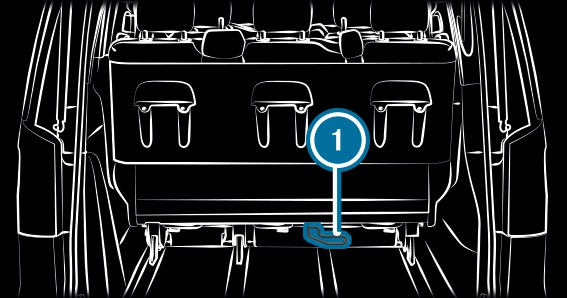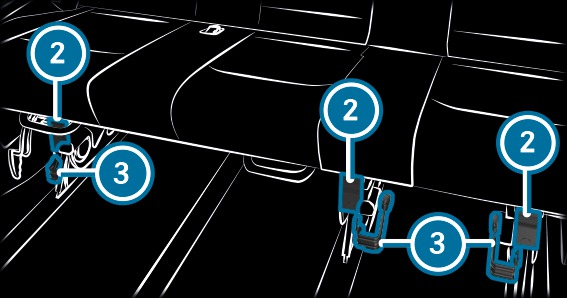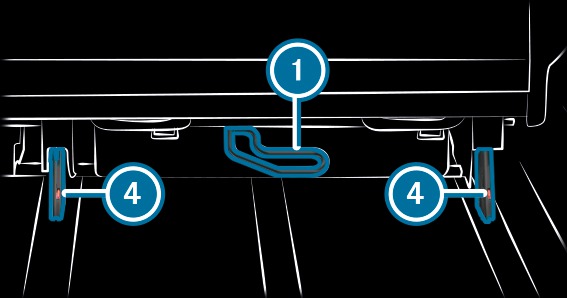If the rear bench seat is not engaged, it may be flung around during travel.
In order to ensure that the rear bench seat can securely engage, keep the seat guide rails and anchorages in the vehicle floor free from dirt and foreign objects.
If the indicator tab of the seat anchorage is not retracted into the seat anchorage, the seat is not correctly engaged. Engage the seat again.
A seat/bunk combination may not be fitted in the face-to-face position.


In vehicles with a seat rail system, carry out the release, removal and subsequent reinstallation of a rear bench seat at the marked at the marked basic setting.
 up.
up.  up.
up.  .
. 
 from above at the front and allow to engage.
from above at the front and allow to engage.  are folded underneath in the direction of the floor of the vehicle.
are folded underneath in the direction of the floor of the vehicle.  downwards until the indicator tabs
downwards until the indicator tabs  have fully retracted into the rear seat anchorages.
have fully retracted into the rear seat anchorages. The rear seat anchorages of the seat/bunk combination are correctly engaged when the seat anchorages engage audibly and the indicator tabs  on the seat anchorages are no longer visible and have fully retracted into the seat anchorages.
on the seat anchorages are no longer visible and have fully retracted into the seat anchorages.

